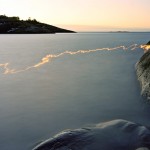 Lepenski vir, a unique prehistoric discovery is situated within The Iron Gate (Đerdap gorge), on the low terrace of the Danube River . That was the center of one of the most important cultures of the prehistory. Nothing comparable has ever been unearthed in relation to such early prehistoric periods in the Balkans and the Danube basin. The art of the pre-history settlement of Lepenski Vir – with unique stone sculptures of fish-like gods, captured the world’s attention. The most important finds in the well laid-out settlement are a number of monumental stone sculptures made some six to seven thousand years ago.
Lepenski vir, a unique prehistoric discovery is situated within The Iron Gate (Đerdap gorge), on the low terrace of the Danube River . That was the center of one of the most important cultures of the prehistory. Nothing comparable has ever been unearthed in relation to such early prehistoric periods in the Balkans and the Danube basin. The art of the pre-history settlement of Lepenski Vir – with unique stone sculptures of fish-like gods, captured the world’s attention. The most important finds in the well laid-out settlement are a number of monumental stone sculptures made some six to seven thousand years ago.
All settlements of the culture of Lepenski Vir were positioned at low terraces, small and isolated because they were divided by the Danube on one side, and on another they were closed by steep slopes of surrounding hills. The architecture of Lepenski Vir has a specific style because there are neither octagonal bases nor vertical walls. Habitats in those settlements had a shape of cut part of circle with a sharp roof that lies on the base with hard floor made of broken calcite, with a big pebble positioned within, supporting stone sculptures. In the center of all settlements there was a wide square and habitats were arranged around them in regular lines. The square was the place designated for various rituals.
Sculptures made of big pebbles representing human figures, were positioned around the fireplace. At the beginning only head was shaped. At later stages these sculptures would get the form of human figures, to gain the shape of real idols. Most often these would be human heads having the shape of fish or deer, while some of the discovered objects had mysterious images engraved: signs similar to coordinate system, sketches, letters, numbers or sceneries.
The museum was built on this location, and it displays most important archeological exhibits and copies of the most beautiful sculptures the originals of which have been exhibited in the National Museum of Belgrade.

















